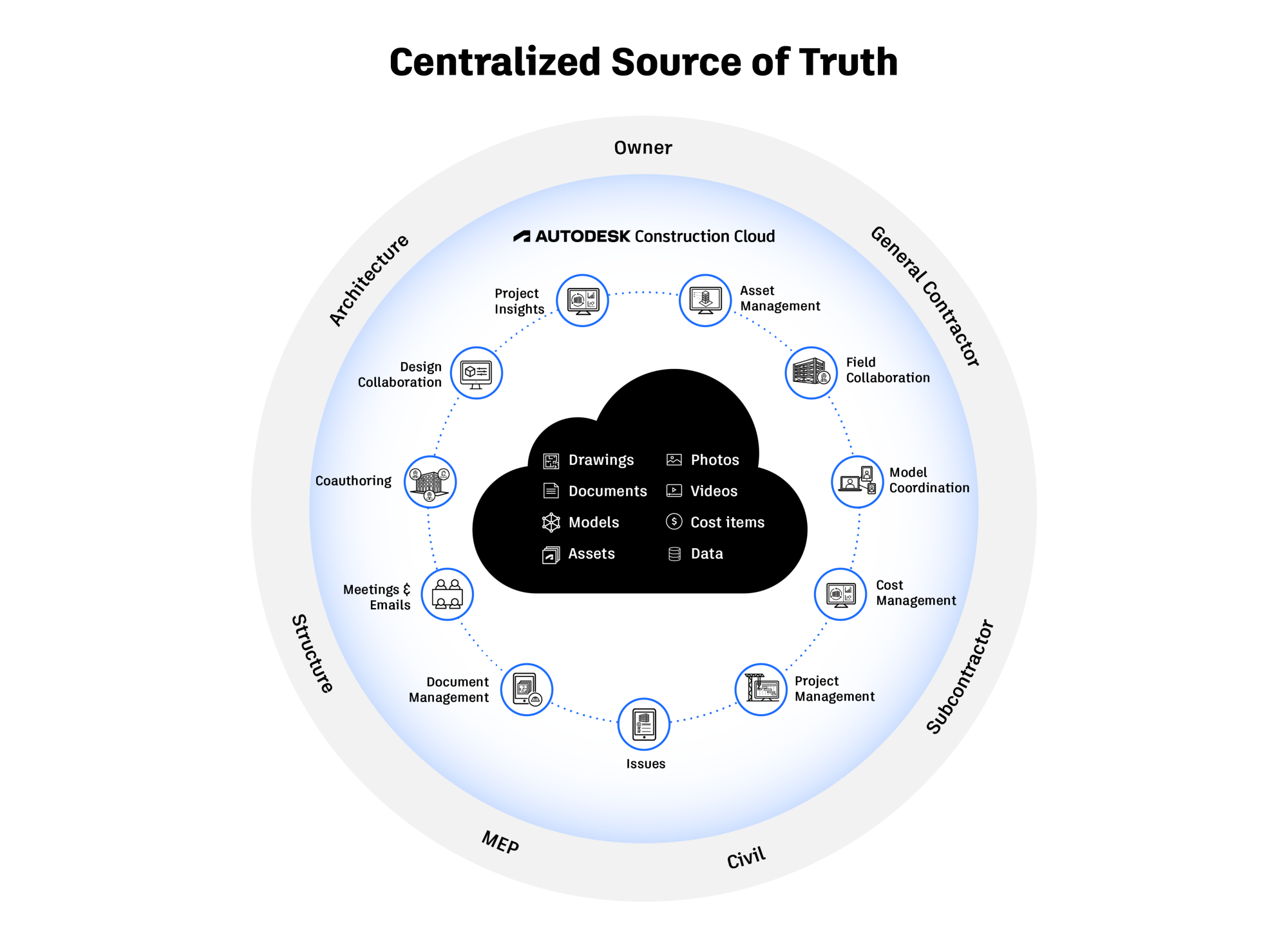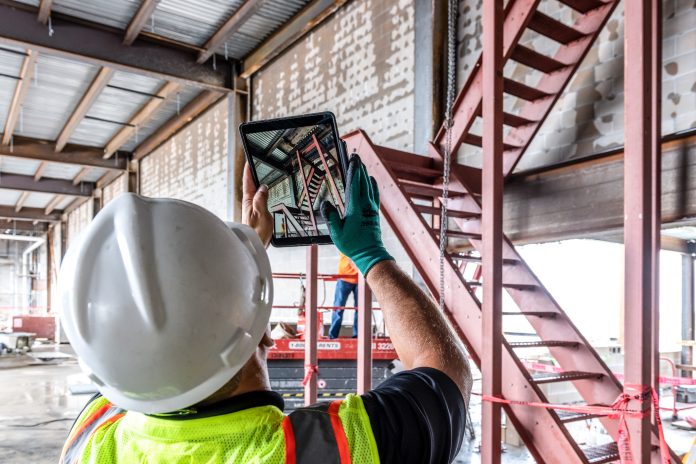Cloud-based solutions can facilitate the collection and analysis of vast amounts of data generated throughout the lifecycle of a project
The way we store and process information is constantly evolving. Information has become a form of currency in our digital age, so every industry has utilised multiple digital platforms, where stakeholders can exchange and consume information, as well as collaborate based on shared data and tools.
In the architecture, engineering and construction industry, we have come a long way from sending out drawings in the post for review and waiting a long time for comments to be returned.
The move to digital and 3D modelling has enabled users to collaborate on models to reduce siloed workflows and highlight construction issues long before work begins. This evolution in workflow reduces duplicated work and eliminates costly and time-consuming errors in the construction phase of a project.
These files are typically stored locally on physical servers based in the individual offices and then collaboration is done by sharing the digital files.
While these methods work, expanding and upgrading servers can call for substantial upfront investments in hardware, especially as the amount of data we produce is constantly expanding.
Within the last 10 years, all industries have begun exploring cloud-based solutions as infrastructure and connectivity speeds have drastically improved. Within the Autodesk AEC space, the initial cloud-based solutions were the BIM360 suite of products.
This suite of products allows construction professionals to work across the whole lifecycle of a project from design, planning and building through to operation.
The Covid pandemic dramatically changed the way we collaborate, with everyone working from home trying to access data stored in physical office locations. This has pushed companies to explore cloud-based solutions on all projects, breaking down geographical barriers and enabling seamless teamwork among project stakeholders.
The Autodesk AEC offering has evolved from BIM360 to the Autodesk Construction Cloud. Cloud-based collaboration platforms allow architects, engineers, contractors and clients to access, review and mark up project models and documents in real-time. These platforms facilitate concurrent work, streamline communication and eliminate version control issues commonly associated with traditional file-based systems. The cloud empowers teams to collaborate, improve decision-making, reduce errors and accelerate project deliverydta

The Autodesk offerings are broken down into Docs, BIM Collaborate/BIM Collaborate Pro, Takeoff and Build. Depending on where you are involved in the project lifecycle will determine what product you are most likely to interact with. Docs is the cloud-based document management and common data environment and is the foundation of the Construction Cloud – the platform from which the other tools work.
If you are in the design phase of the construction project, you and your team can leverage the power of BIM Collaborate. Your team can have greater control over exchanging model data via the cloud, teams can coordinate and clash-check different disciplines, keeping track of project progress with timelines. BIM Collaborate Pro is the next step up and allows teams to co-author models from Revit, Civil 3D or Plant 3D directly in the cloud.
When moving the construction project from the design phase into pre-construction, we need to extract accurate information from the construction documentation to produce tenders. Using Autodesk Takeoff, we can work from the cloud and produce 2D and 3D quantification. It’s also possible to combine these 2D and 3D quantities.
Communication is the critical part of any project, but this is especially important during the construction stage. Many external contractors working on different parts of the building need to communicate with onsite and offsite teams, which demands a robust tool.
Autodesk Build allows site teams to communicate directly with design teams and other project stakeholders, upload photos, create RFIs and instantly communicate with the correct person or company no matter their location. As well as enabling communication, Build allows teams to keep on top of scheduling, costs and most importantly, site safety procedures.
Cloud technology facilitates the collection and analysis of vast amounts of data generated throughout the whole lifecycle of a project. From initial design and design development, through to fabrication and construction, to project handover. All this data can be utilised by stakeholders, no matter where they sit in a project lifecycle, to produce data-driven insights and process automation.
Vast amounts of data can be a valuable resource, but only if we are able to use it in the correct way and learn from it. By leveraging cloud-based solutions and analytics tools, companies can derive meaningful insights from project data, identify trends, make informed decisions and analyse what has been successful or not so successful on previous projects. This will allow teams across the construction of a project to adapt and evolve their working practices and make evidence-based decisions.
*Please note: This is a commercial profile.
Rob Merriman
Software Technical Team Lead
Graitec UK
Tel: +44 2380 868947

















